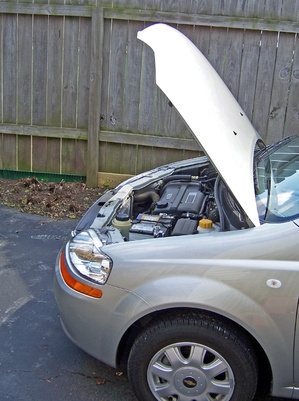
A motor mount is an automotive part that supports the engine and transmission of a vehicle. Along with providing support, motor mounts cushion the natural movements of these parts. Without properly operating motor mounts, the engine and transmission will strike other objects inside the engine compartment and become damaged. The movements of the engine and transmission may also damage other components. There are two basic designs of motor mounts: those that use a rubber block and those that use a small hydraulic piston to dampen movements. Testing to check both styles of mounts are the same.
Block the wheels with the wheel chocks to prevent movement of the vehicle either forward or backward. Raise the hood of the vehicle and use the flashlight to locate the motor mounts. Motor mounts will be located in various locations above and below the engine and transmission depending on the specific model.

Examine the motor mounts for signs of damage. The rubber blocks in the motor mounts can crack, split, or show other damage that will require replacement. Examine hydraulic mounts for signs of fluid leakage, corrosion or other damage. The mounting plates that secure the mounts to the vehicle's frame may also corrode or break.
Have the assistant start the vehicle. While you stand off to the side of the vehicle to observe the engine, have the assistant depress and hold the brake pedal and shift the car into drive. Watch the engine for rapid or excessive movement. The engine should move less than ½ an inch when placed into gear. A banging noise may also be a sign of a faulty motor mount.
Have the assistant place the vehicle in reverse and again watch for movement or noise. Have the assistant place the car back into park and turn off the vehicle.

Use pry bar to flex motor mounts. Any looseness in the mount will require replacement of the motor mount.
Use the pry par to check for play between the motor mount and the mounting surface of the engine or transmission. Play between the motor mount and mounting surface may be a result of bolts that come loose.